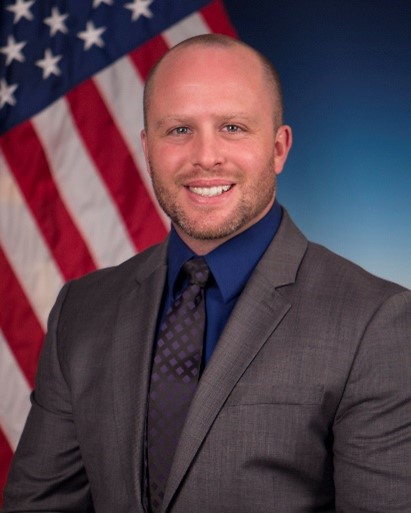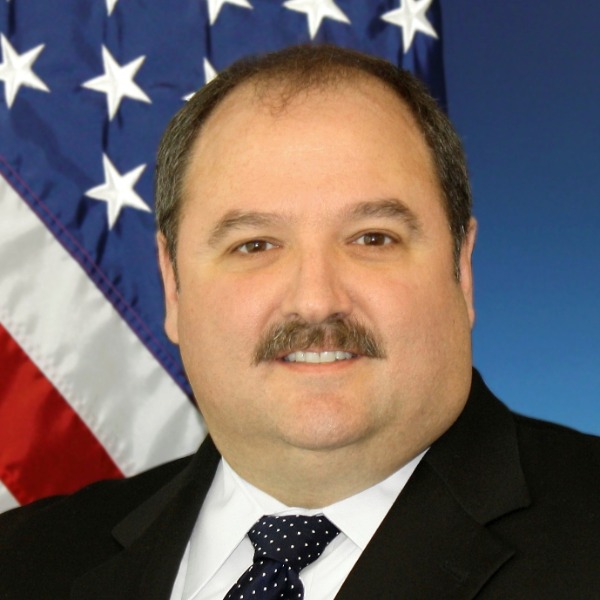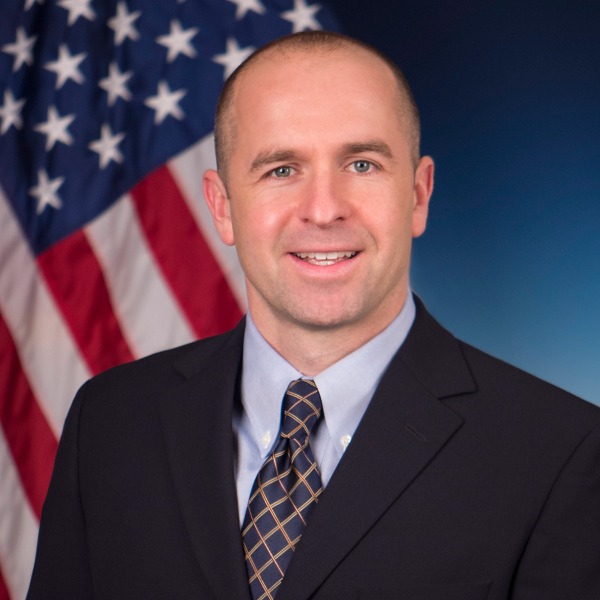
A panel of experts from the first agency to get authority share the benefits of using OT in their programs
Scott Ulrey, deputy director of contracts at the Defense Advanced Research Projects Agency (DARPA), facilitated a panel discussion at the NCMA World Congress on the use of Other Transaction (OT) authority in July 2021.
The panelists included Lydia Richards, an experienced OT negotiator at DARPA; Wes Bennett, DARPA director of contracts; and Peter Donaghue, a DARPA division director. DARPA was the first DoD agency to receive OT authority in 1989, and has been awarding OTs ever since. This enabled the panelists to discuss actual examples and get to the specifics of how to be most effective with OTs.
The discussion began with Ulrey explaining both the mission at DARPA and OT agreements. Each panelist described why an OT was awarded in a program they directed before the panel took audience questions.
Scott Ulrey: The mission of DARPA is to both prevent and create strategic surprise.
At DARPA, we engage in the development of very high-risk, high-payoff, revolutionary and game-changing technologies that will have an impact on the war fighter. To push the state of the art, we need to attract commercial and other non-traditional companies.
Back in the 1980s, industry was making rapid technology advances, particularly in microelectronics, and the Department of Defense (DoD) wanted to take advantage of those advances. In 1989, DARPA received authority to enter into other transactions in order to bring commercial technology companies into our performer base.
The best way to define other transactions is to describe what they are not. They are not procurement contracts, grants or cooperative agreements.
In the early use of OTs at DARPA, we negotiated partnership arrangements with commercial companies like Intel, Motorola and Hewlett Packard. These companies were hesitant to do business with the federal government because they did not want to comply with regulations associated with FAR. They were willing to sell commercial products, but wanted a lot of intellectual property flexibility because that is the lifeblood of commercial industry. They also wanted to use their own commercial systems such as for property and subcontract management. Finally, they did not want to comply with government accounting practices.
In 1994, DARPA received the authority to award OTs that were designed to acquire rapid prototypes for the direct benefit of the government. These differed from research OTs as they resulted in a final prototype product while advancing the technology and investing in those companies to focus on technologies of interest to the DoD.
Global Hawk is an example of one of these first prototype agreements. Global Hawk is the unmanned aerial vehicle that the Air Force has right now. It is amazing it is a performance-based effort that took seven years from the start of drafting the solicitation to the end of fielding a prototype and moving on to production. So, it was very rapid.
Wes Bennett: The best way to understand the Robotic Servicing for Geosynchronous Satellites (RSGS) program is to ask a couple questions.
First, who buys a car, drives it, never gets oil changes and once the engine stops, takes it to the junkyard? Second, who does not think about the sustainment and maintenance of major systems acquisitions to ensure the system will endure throughout the life cycle of the program? That is exactly what DoD currently does for satellites. We launch a satellite, hope for the best, and if it does not work when it is first launched, or runs out of fuel, it is essentially scrapped.
The RSGS program’s goal is to fix anomalies and extend the satellite’s life. The concept is to put robotic arms on top of a commercial bus that will be available in geosynchronous orbit to fix, modify, and otherwise allow satellites to continue their function. We awarded this as a prototype OT because there are many more commercial satellites in geosynchronous orbit than DoD satellites. If we can make commercial companies accomplish this as a partnership, we can drive down the price for the DoD.
Peter Donaghue: DARPA has been investing in programs to combat the spread of infectious disease and prevent pandemics for a very long time. In 2017, we solicited proposals for award of an OT with the goal of developing an end-to-end platform capability that could literally stop a pandemic and prevent the spread of any infectious disease in less than 60 days. A very hard objective. The result is the Pandemic Prevention Platform or P3 program.
The program manager at the time said the concept was scoffed at by industry as the technology and the concepts did not exist. After all, it takes years to develop a vaccine or therapeutic. But DARPA is always pushing the state of the art and making that revolutionary leap.
In 2016 and 2017, we were dealing with infectious diseases such as Ebola, Zika, MERS, Dengue, Chikungunya and other SAR viruses. We wanted industry to tell us how to identify an unknown pathogen and grow that virus in large enough quantities to be able to test and evaluate. Then we needed to identify the antibodies and evolve them into powerful antibodies that could defeat the virus. Finally, we needed industry to manufacture at least 20,000 doses of clinical-grade biological product, whether a vaccine or a therapeutic, put it into patients and have it take effect in less than three days. Those were really tough objectives.
We are approximately four years into the P3 program, and it has been a success. We used a research OT under 10 USC 2371, which is for basic, applied and advanced research. You cannot go out and buy commercial goods and services with a research OT—it must fit into one of the three categories.
What also separates a research OT from the prototype authority, is it is really for the stimulation or support of research in the public interest. In other words, you cannot use a research OT to buy goods or services that are directly for the benefit of the government. There should be a dual use nature to the research project; one with both commercial or civilian benefits and a government or military benefit.
When we use this authority, we are trying to push the performer to pursue commercialization of the technology they are developing with an end goal of government eventually buying that technology in the open market, hopefully at a commercial price. That is where we are getting real advantages under the OT authority. And that is why the government’s role and funding under a research OT is more akin to an investor and investment rather than the procurement of goods or services, or even research, for only the benefit of government.
Another important aspect of OT authority is the statutory language, “To the extent practicable, the government funds to the agreement should not exceed the funds being provided by the performer.” That is a huge deal, similar to a 50% cost share, and dwarfs the cost requirement under the prototype authority.
For the P3 OT, DARPA had a biotech company put up 50% cost share. That was significant because it was a very large program, but the company was incentivized because it saw a future.
It is an important point that the government did not add that statutory language to try and squeeze resources out of industry. Instead, the intent was to get companies to put skin in the game, and motivate them to push the commercialization of their research.
Having industry buy in and lead the effort is integral to the use of this authority.
Lydia Richards: I run the Artificial Intelligence Exploration (AIE) program at DARPA. We are looking for innovative artificial intelligence technology that will bring us to the next level of AI as we compete with the rest of the world. What makes my program particularly unique is the process. Every month we post one notice asking for a very particular solution to a problem. Within 90 days of that notice, I award between five to 10 OTs for prototype development.
When most of us think of prototypes, we think of fully formed robot butlers, somewhat like the Jetsons. But the OT statute dictates that a prototype can be anything from a robot butler to an algorithm to just a sliver of code. We are looking for that one prototype that will really project us into the next era of AI, and this allows our DARPA program managers to gather a wide range of ideas and review them in a very short time.
Questions and Answers:
What were the advantages and disadvantages of the type of OT you negotiated?
Wes Bennett: The advantage of the RSGS prototype OT was that it allowed us to take what industry was already doing, get industry interested in working with us, and allow companies to execute something they might otherwise not have without our investment. Then industry sells it to us at a substantially lower price than we would have otherwise paid.
The disadvantages are it was difficult and complex. We are not used to dealing with commercial partners and considering their profit margin and whether they think it is going to be a commercially viable product in the future. We are more used to, “We’re the DoD, this is what we want, and here’s our requirement, now go execute.” You cannot do that with a prototype OT, particularly in a public private partnership. It has to be a give-and-take relationship, and you both have to be in it together, trying to make it work. I guess you could look at that as a disadvantage or an advantage.
One of the biggest advantages of Lydia’s AIE program, as well as OTs for prototypes, is we can move fast. Typically, it takes one year for the program to produce results. We are looking at a very high-risk, potentially high-payoff artificial intelligence that we may decide to make a bigger investment in later. Because of the OT for prototype, we move extremely fast within the procurement acquisition lead time. We require potential proposers to look at our sample agreement article terms and say, “When you provide us with that proposal, what about those terms might you not actually agree to?”
I would like to highlight Lydia’s earlier point. It is 90 days from when we put out the requirement until Lydia makes the award and we’ve had 100% success, which is huge for Lydia and her team.
Lydia Richards: Our solicitations are on the street for 30 days, the program office has two weeks to go through evaluation, scientific reviews and approval, and then I have roughly six weeks to negotiate. That is why OT for prototypes with fixed milestones were selected.
What kind of performance challenges did you run into as you are dealing with a rather unique set of performers on these OTs?
Wes Bennett: Our challenge was DARPA providing government-furnished property. In this case, DARPA provided the robotic arms and required the commercial partner to provide their own commercial bus, the integration of our robotic arms onto their bus, the launch and future operations. That is a big deal to take on. There was no monetary exchange in this particular OT, so the performer really needed to be able to close on their business case and understand how they are going to make future profits. The big challenge for us was to help them understand what the DoD market was going to be in the future and which potential transition partners were onboard—partners that would want to use this service in the future.
Lydia Richards: Most of the challenges I come up against are during negotiations. We have a bit of a head start in negotiations in the AIE program because we post a sample of what the OT looks like with the program announcement. Each performer can go through and request changes to the terms and conditions and ask questions as part of their proposal package.
Right at the beginning I read their comments and give them answers or possible alternate language. But, since these OTs are primarily for fundamental research, I correspond a lot with universities that are used to grants and cooperative agreements and want to make the entire agreement look like a grant. They ask for a lot of language from 2 CFR 200, and are worried about the milestones and not getting direct reimbursement for actuals as opposed to achieving a milestone. I ask what their fears are and what we can do to assuage them. Often they see the flexibility of the OT vehicle is much easier for them, and we can negotiate things such as intellectual property with terms that are less stringent than strictly following the FAR and DFARS intellectual property process.
For me, demonstrating to universities and some smaller businesses and nonprofits how flexible, easy and advantageous this process can be has been the most difficult part.
What was the most difficult part of the negotiation?
Peter Donaghue: It depends on the performer as well as the scope of the project. The issues vary and could have to do with patent rights or foreign access to technology.
For our biotech research OT, we used the milestone plan, which is not uncommon as it holds the performer’s feet to the fire. The milestone plan lays out the key technical tasks, key technical objectives, deliverables and the completion criteria that must be achieved to get paid while hitting the goals of the program. It has to be perfect, and it has to be laser focused if you really want success.
It took us a lot of time to fine tune those plans with the performer. It also took time to decide on an appropriate funding value for the milestones. Making sure your milestone plan, whether it is for research OT or an OT for prototype, is set up to keep the focus on important technical accomplishments is a key step in the negotiation process.
My final point is when negotiating the cost share, make sure the government and performer split is shared throughout the OT, and both parties are contributing to the development of all technology. In most cases, this means you want to avoid having a performer resource share specific tasks and the government fund other specific tasks. Letting the performer pay for a specific part of the technology development could result in the government losing the ability to negotiate license rights to that data or rights to the invention that might be developed under the OT. In most cases, you should structure milestone plans to ensure any resource sharing is part of every single task in that agreement.
Wes Bennett: For the RSGS program, the termination article was hard to negotiate. In public private partnerships, we typically allow both parties an equal opportunity to terminate. This was our second round—in the first round, our commercial partner terminated as was its right. It decided at some point the business case no longer made sense. A lesson learned for DARPA was to ensure we both had some skin in the game if we walked away. In this case, if DARPA walks away, we will hand over the robotic arms so they can continue down the commercial path of potentially putting this on the bus. But we wanted to make sure any future commercial partner could not walk away without any penalties as we continued to invest resources in completing the robotic arms. Ultimately, we negotiated our partner would provide other commercial services in the event they terminated.
Lydia Richards: One of the most challenging parts of my negotiations are intellectual property and data rights. Again, the end goal of the AIE projects is for prototype development, so these performers are working very hard to come up with innovative ideas for AI they can commercialize. They are afraid their data and discovery will be broadcast to the world.
The wonderful thing about OTs is we can negotiate very specific data rights. On more than one occasion working with the PM, the performer and with leadership, I have been able to negotiate something similar to Small Business Innovative Research (SBIR) rights, which are tiered. This gives the government limited data rights in the beginning, then progresses to unlimited rights five or six years down the line or as long as it makes sense for the program. This gives the performer an opportunity to get ahead of the competition and profit from its research early in the process.
How did you determine a reasonable price?
Wes Bennett: We did not determine a reasonable price, at least not in the traditional sense. We had to determine the consideration the government was receiving was worth the value of the government-furnished property we were providing at the end of the agreement. We looked at how much it cost us to develop the robotic arms—the non-reoccurring engineering costs. That was the ledger on the government side. Then we looked at the ledger on the commercial provider side and how much were launch and integration costs, and how much would it cost for us to run the servicing once it was launched.
We also looked at other considerations such as discounted pricing to use these services in the future. In the end, we documented the value exceeded the one-third cost share typically required in an OT for prototype. Although we felt strongly the value was there for the government, the commercial provider now gets the opportunity to get a head start in the marketplace and if this is successful, provide these services long before others can. That is a win-win for both sides.
Peter Donaghue: In our case with the biotech company, they did a pretty good job providing supporting cost information in a more traditional way to help us understand the costs were not only realistic, but also reasonable. That is not often the case. I’ve awarded many OTs, research OTs and OTs for prototypes to a brand new or small business or a multinational conglomerate that simply will not give you that detailed information. They’re not going to provide insight into their indirect rates or direct labor rates or they simply do not track or account for costs that way. Therefore, sometimes you have to get creative and use other tools to assess whether costs are reasonable. You can do that under OT authority.
In this award, even though the company gave us some insight into its labor rates and indirect rates, it was putting in 50% cost share on a massive award. I was not going haggle over whether the direct labor rate should be $70 or $75 or whether the fringe rate, based on the information I have, should have been 30% and not 35%. We didn’t believe that was a reasonable way to approach the negotiation.
You have to look at the value analysis and what they bring to the table. As they are heavily invested in this project, is it worth trying to nickel and dime the company over rates in this scenario? Our team decided it was not. We were comfortable with the information we had to ultimately determine that what had been proposed was reasonable for this project, and the government was getting substantial value from the partnership. CM

Wes Bennett
Director of the Contracts Management Office at DARPA

Scott Ulrey
Deputy director of the Contracts Management Office at DARPA

Peter Donaghue
Agreements/Contracting officer and division director in the Contracts Management Office at DARPA
.jpg)
Lydia Richards
Agreements/Contracting officer in the Contracts Management Office at DARPA